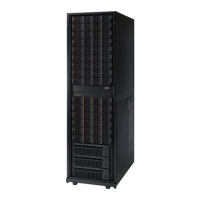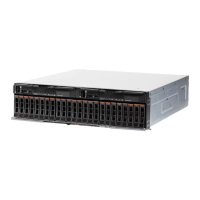snapshot_change_priority snapshot=DBVolume.snapshot1 delete_priority=4
Output:
Command completed successfully
Access Control:
User Category Permission Condition
Storage administrator Allowed N/A
Storage integration administrator Allowed N/A
Application administrator Conditionally Allowed The master volume of the
snapshot is mapped to a host or
cluster associated with the user
and the snapshot was created by
the application administrator.
Security administrator Disallowed N/A
Read-only users Disallowed N/A
Technicians Disallowed N/A
Completion Codes:
v VOLUME_IS_NOT_A_SNAPSHOT
Operation is permitted only on snapshots
v SNAPSHOT_ILLEGAL_PRIORITY
Illegal snapshot priority; must be an integer between 1 and 4.
v SNAPSHOT_IS_INTERNAL
Internal snapshots cannot be mapped, modified or deleted.
v SNAPSHOT_IS_PART_OF_SNAPSHOT_GROUP
Snapshot is part of a Snapshot Group
v VOLUME_BAD_NAME
Volume name does not exist
v SNAPSHOT_IS_CONSISTENT_ELCS
If a mirrored volume is not consistent then its ELCS is protected and cannot be
deleted.
Creating a Snapshot
Creates a snapshot of an existing volume.
snapshot_create vol=VolName < [ name=Name ]
[ delete_priority=del_value]>|<overwrite=Name >
Parameters:
Name Type Description Mandatory Default
vol Object name Name of the
volumes to
snapshot.
Y N/A
64 IBM XIV Storage System User Manual

